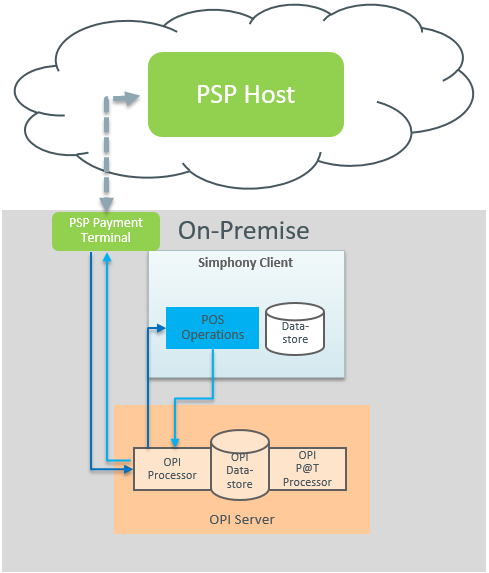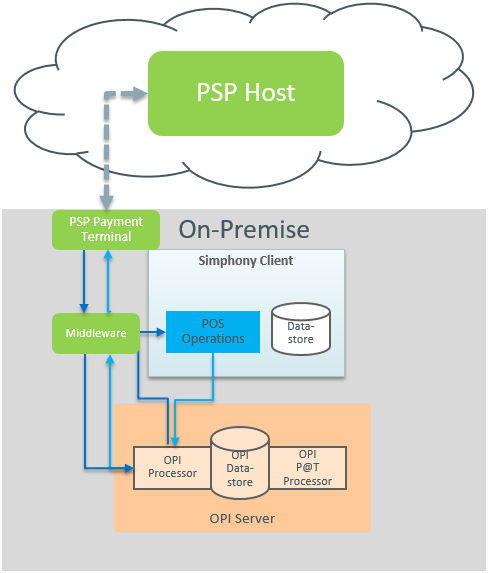OPI Architecture
In the Simphony implementation, an OPI server is installed on-premise and processes payment requests between the Simphony POS clients and the PSP. The PSP provides the PIN Entry Devices (PEDs) that read and process credit card data, and then communicate with the PSP Host on the Cloud. The PEDs can be connected directly to the POS clients (usually via serial, USB, or Bluetooth connection) or they can be network devices.
-
Terminal Mode
-
Middleware Mode
In Terminal mode, the OPI Datastore database contains a table with a one-to-one mapping of POS client to PED. A payment request from a POS client is directed to the correct PED. In Middleware mode, the PSP provides an application, called middleware, that handles the mapping of a POS client to a PED. The OPI server directs all payment requests to the middleware application, which then routes the request to the appropriate PED. In either mode, neither the OPI server nor Simphony come in contact with credit card data. Sensitive data is handled strictly between the PED or middleware and the PSP Host. OPI receives and stores tokens and voucher printing instructions from the PSP, and passes the voucher data to Simphony, leaving Simphony and the OPI server out of PA-DSS scope.
Figure 12-1 Terminal Mode Architecture

Figure 12-2 Middleware Mode Architecture

Related Topics
- Configuring the OPI Driver
- Configuring the OPI Payment Module
- Configuring the Default Payment Tender for OPI
- Updating Credit Card Preambles for OPI
- Configuring the OPI and SPI to Settle Transactions Automatically
- Configuring the OPI and SPI to Settle Transactions Manually
- Credit Card Preambles for OPI and SPI